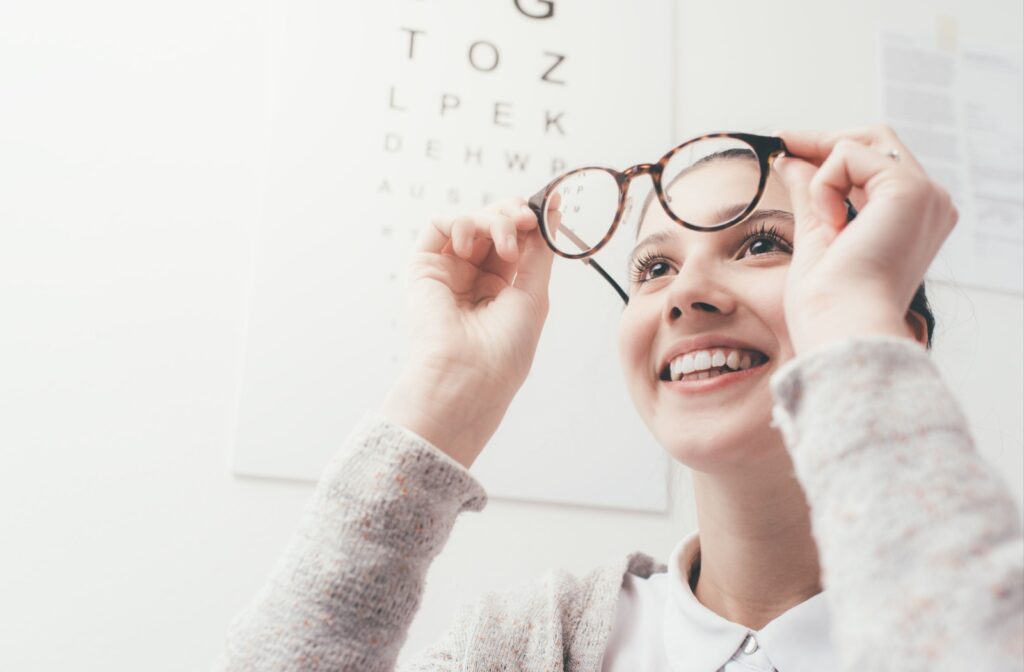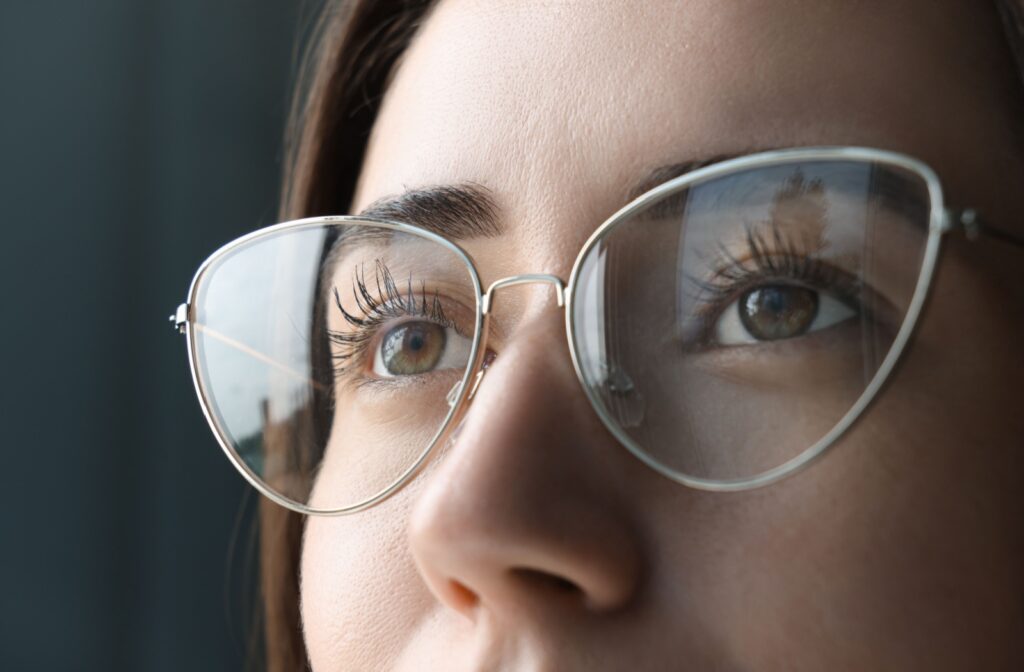If you or your child has trouble reading distant signs, seeing the board at school, or identifying objects further away, nearsightedness might be impacting your daily life. The good news is that nearsightedness can be corrected with lenses.
Glasses or contact lenses with a concave shape are the primary solution used to correct nearsightedness and restore clear vision. For children, nearsightedness can be even more of a concern, as their eyes are still growing and their vision will likely worsen without proactive treatment.
What Is Nearsightedness?
Nearsightedness, also known as myopia, is one of the most common refractive errors affecting vision. About 30% of the U.S. population has some level of myopia—and that number is on the rise.
This condition occurs when the eyeball grows too long or the cornea becomes too curved. The way vision works is that light passes through the cornea, the eye’s clear front dome, and focuses through the internal lens. In a healthy eye, it focuses directly onto the light-reactive cells called the retina at the back of the eye.
However, because nearsightedness changes the eye’s shape, light rays instead focus in front of the retina instead of directly on it. This results in clear near vision, but objects in the distance appear blurry.
What Causes Nearsightedness?
Nearsightedness is influenced by both genetics and the environment. Children with nearsighted parents are more likely to develop the condition, and its progression can happen more rapidly in these cases. Though these children are more likely to be nearsighted, they’re not guaranteed to be, and it’s also not the only reason.
Environmental factors can also increase myopia risk, such as prolonged near-focused activities, like using screens or reading, and too much time spent indoors.
For children, this refractive error isn’t just about blurry vision. Myopia can interfere with daily activities, such as seeing the board in school, leading to potential frustration and difficulty focusing in class. Since 80% of learning his visual, vision problems can even lead to kids struggling to keep up with their peers academically.
Identifying and addressing nearsightedness early is crucial for preserving not only your child’s vision but also their confidence and success.
Diagnosing Nearsightedness
Vision problems can be hard to notice in kids who don’t have the words to explain what’s going on. That’s why detecting nearsightedness often requires a comprehensive eye exam. During the exam, your optometrist conducts various tests to assess the clarity of vision and measure the degree of refractive error. This is an important step to determine the correct prescription needed to restore clear distance vision.
For children, regular eye exams are essential to monitor vision development and catch issues like myopia early. Here’s what you should know about exam timing:
- Schedule their first comprehensive eye exam between 6 and 12 months.
- Follow up with an exam before school begins between 3 and 5 years of age.
- Continue with yearly eye exams from kindergarten through age 18.
Consistent checkups help prescriptions stay up to date and allow parents to discuss treatments that can help manage and slow myopia progression.

How to Correct Nearsightedness
Corrective lenses are the most effective and accessible way to address nearsightedness. They redirect how light enters the eyes, helping it focus properly on the retina. To correct nearsightedness, the lenses need to be concave, which means they feature a thinner center and thicker edges.
This shape ensures that light entering the eye diverges slightly before meeting the cornea, giving it space to come back together onto the retina. These lenses can be worn in 2 ways:
Glasses
Glasses are the most popular and versatile way to correct nearsightedness, providing clear distance vision with ease. They are practical, reliable, and highly customizable, offering a variety of frame styles and lens options to suit your needs.
From fashion-forward designs to functional features like anti-reflective coatings, glasses can be tailored perfectly to your lifestyle.
Contact Lenses
Contact lenses sit directly on the cornea and can correct nearsightedness just as effectively as glasses. Unlike glasses, contact lenses don’t have frames, offering an unobstructed field of vision.
Contact lenses come in many different types, including soft and rigid gas-permeable (hard) lenses. With options tailored to comfort, lifestyle, and vision needs, an optometrist can help determine the best type of contact lenses for you or your child.
Specialized Lenses for Myopia Control
Children’s nearsightedness tends to progress as they grow. While traditional lenses can certainly correct blurry vision, they’ll have to keep changing their prescription as they age. Not only that, severe myopia can increase the likelihood of developing vision-threatening conditions later in life, such as:
- Retinal detachment
- Cataracts
- Glaucoma
- Myopic maculopathy
Specialized lenses can play a critical role in myopia control, a treatment program that can slow the progression and reduce the risk of high myopia. Some of the lenses designed to address myopia progression include:
Peripheral Myopic Defocus Lenses
These innovative lenses utilize power zones that focus light differently across the lens. They maintain full focusing power in the center, while the peripheral zones reduce the focusing power. This design allows some light to focus in front of the retina to signal the eye to slow its growth.
This both controls myopia’s progression, but still allows your child to enjoy clear vision. These lenses are available as spectacles and as soft contact lenses.
Orthokeratology (Ortho-K) Lenses
Orthokeratology, or ortho-k, involves wearing rigid gas-permeable (RGP) lenses overnight to gently and temporarily reshape the cornea. This can provide corrected vision during the day without needing to wear glasses or contact lenses, making them an excellent choice for active kids who might otherwise lose their lenses.
Not only that, studies have shown that ortho-k lenses can slow myopia progression by around 50%. The eyes will eventually return to their original shape, so this is a good option for diligent kids who will wear their lenses every night.
Clearer Vision Starts Here
At Pacific Eyecare Optometry, our team is passionate about helping patients of all ages achieve clearer, healthier vision. From glasses and contact lenses to your yearly check-up, we make the process simple and stress-free. Together, we’ll find the perfect solution for you or your child and set you on the path toward better eyesight.
Book your appointment today and take the first step toward sharper, healthier vision.



